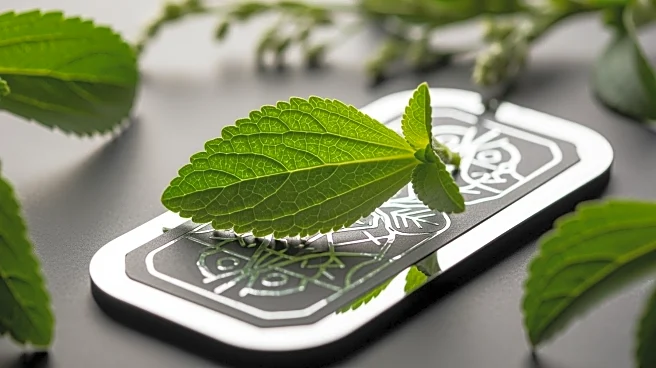What's Happening?
Researchers from China and Australia have developed a new method to enhance the effectiveness of minoxidil, a common hair loss treatment. By combining minoxidil with a microneedle patch using stevioside,
a sweetener from the Stevia plant, the treatment's absorption and effectiveness are improved. This innovative approach addresses the limitations of traditional minoxidil applications, which suffer from poor water solubility and skin permeability. The study, published in Advanced Healthcare Materials, demonstrated promising results in mouse models, showing significant hair regrowth compared to standard treatments.
Why It's Important?
This development could revolutionize the hair loss treatment industry, which is a multi-billion dollar market. The use of a natural sweetener to enhance drug delivery may lead to more effective and accessible treatments for androgenetic alopecia, a condition affecting a significant portion of the population. If successful in human trials, this method could reduce the need for more invasive procedures and offer a cost-effective alternative for those experiencing hair loss. The innovation also highlights the potential of natural compounds in enhancing pharmaceutical applications.
What's Next?
The promising results in mouse models pave the way for clinical trials to assess the efficacy and safety of the Stevia-based patch in humans. Researchers will need to address the differences in hair growth cycles and the multifactorial nature of androgenetic alopecia in humans. Successful trials could lead to regulatory approval and commercialization, potentially transforming the landscape of hair loss treatments. The scientific community and industry stakeholders will be closely monitoring these developments.












